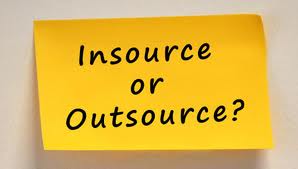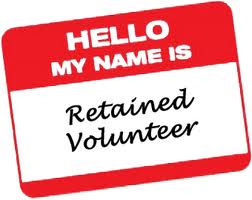 In my hometown of Elgin, Illinois, we are gearing up for city council elections. There is a Primary Election tomorrow (February 26, 2013) to narrow the field for a two-year vacancy on the council, and the general election is April 9, 2013 where voters will fill the two-year vacancy as well as four additional four-year seats. A total of five seats are up for grabs, and 22 different people have their hat in the ring.
In my hometown of Elgin, Illinois, we are gearing up for city council elections. There is a Primary Election tomorrow (February 26, 2013) to narrow the field for a two-year vacancy on the council, and the general election is April 9, 2013 where voters will fill the two-year vacancy as well as four additional four-year seats. A total of five seats are up for grabs, and 22 different people have their hat in the ring.
You’re probably asking: “What does any of this have anything to do with non-profit organizations or fundraising?”
As you can imagine, a race with those many people gets cluttered. Who stands for what? What are the issues of the day? Why are people running? In an effort to bring some clarity, The Daily Herald newspaper identified a few issues, talked to the candidates about those issues, and wrote stories about what they found. One of those stories is about the Elgin Symphony Orchestra (ESO) and its quest to restore its city funding.
I look at this local story and see bigger implications for the entire non-profit community nationwide. Increased pressure on government budgets in the upcoming years will transform how and where governments allocate money to non-profit agencies.
Accountability and sustainability
 If you clicked the Daily Herald link above or this article from The Courier-News, then you know that one of the objections some folks have to funding the ESO is that they ran budget deficits for a few years and burned through some of their endowment during the economic downturn. This raises sustainability questions because no donor (regardless of whether they are an individual, corporation, foundation or governmental agency) wants to fund something that isn’t sustainable.
If you clicked the Daily Herald link above or this article from The Courier-News, then you know that one of the objections some folks have to funding the ESO is that they ran budget deficits for a few years and burned through some of their endowment during the economic downturn. This raises sustainability questions because no donor (regardless of whether they are an individual, corporation, foundation or governmental agency) wants to fund something that isn’t sustainable.
In this instance, the issue is evolving into an accountability question: “how can grant deliverables be designed to hold the ESO board and staff accountable to creating and implementing a sustainable business plan?”
There also appears to be a community standard evolving out of this discussion where some council members don’t want to provide funding at levels that would be too high for an agency to easily replace if the city ever decided to pull its funding. Of course, this approach creates challenges because it is difficult to hold agencies to meaningful grant deliverables when the dollars at stake aren’t big enough to fund programming capable of generating community impact.
What does the future of government funding across the country hold? I suspect we’re on the path to:
- fewer funding opportunities,
- smaller allocations,
- increased accountability,
- greater demand for sustainability planning and increased organizational capacity, and
- more transparency.
Who should get what?
 It is a simple fact that government has less money to work with today than it did yesterday.
It is a simple fact that government has less money to work with today than it did yesterday.
Ahhhhh. Do you remember the late-1990s and 2000s, when government appeared to have money and spread it around to a number of different charities? I know that some of my non-profit friends fondly look back and proclaim: “Those were the days.”
With an economic slowdown and mounting debt problem, resources are getting tighter, which potentially means increased conflict over the question of: “Who should get what?”
In the past, the City of Elgin used its Riverboat fund and Community Development Block Grant (CDBG) funds to support non-profit agencies that aligned with the city’s strategic priorities and direction. Here are a few examples:
- PADS of Elgin funding helped the city with its homeless population.
- Elgin Chamber of Commerce helped the city with economic development.
- Boys & Girls Club of Elgin helped the city address issues such as juvenile crime, gang activity, childhood obesity, and supplemental educational opportunities.
- Elgin Symphony Orchestra was an investment in the arts as well as an economic engine that brought consumers downtown to spend their entertainment dollars.
- Downtown Neighborhood Association (DNA) was aimed at economic development and an attempt to focus downtown merchants on revitalizing the central business district.
In this new world of government funding, we are already starting to see two things:
- political candidates who are happy to turn these resource allocation issues into campaign issues (e.g. politicizing non-profit funding) and
- non-profit agencies taking their case for support very public as they compete for public dollars.
Outsourcing versus insourcing
 Back when the government funding gravy train was running strong, I noticed that the case for support for government funding of non-profit organizations involved the idea of “outsourcing” with the silent case for support being it costs non-profits less to provide these services because:
Back when the government funding gravy train was running strong, I noticed that the case for support for government funding of non-profit organizations involved the idea of “outsourcing” with the silent case for support being it costs non-profits less to provide these services because:
- non-profit agencies pay their employees smaller wages,
- non-profit employees have fewer fringe benefits than public sector employees,
- there are fewer unions operating in the non-profit sector than there are in the government sector, and
- an ounce of prevention is worth a pound of cure (e.g. keeping kids out of gangs is cheaper than funding the problems created by gangs and crime).
Outsourcing was a conservative solution to questions involving the appropriate role of government and the size of government.
Now that municipal budgets are shrinking and public sector layoffs are occurring, I predict that the idea of “insourcing” could become a trend. City recreation departments will try doing more with at-risk kids. Police departments will employ more social workers to deal with domestic violence. The planning department will hire economic development specialists.
This money will come in part from what is clawed-back from non-profit organizations.
If I am wrong on this hunch, then I suspect that money will be used to fund other city priorities like potholes, capital projects, and core city services. If this is the case, then we’re about to all pay a lot more money to address things associated with social problems.
Is your non-profit organization taking in a lot of government money to fund your mission? Are you worried about the direction things seem to be heading? What are you doing (if anything) to make adjustments?
Here’s to your health!
Erik Anderson
Founder & President, The Healthy Non-Profit LLC
www.thehealthynonprofit.com
erik@thehealthynonprofit.com
http://twitter.com/#!/eanderson847
http://www.facebook.com/eanderson847
http://www.linkedin.com/in/erikanderson847
 As you know, last week I re-ran five of the most viewed DonorDreams blog posts because I needed to take a break. What I didn’t tell readers is that the break was really a week-long vacation to see old friends and visit California’s Sonoma County wine country for the second time in my life. If you haven’t had the opportunity to visit California wine country, then you have to add it to your “bucket list”. It was spectacular!
As you know, last week I re-ran five of the most viewed DonorDreams blog posts because I needed to take a break. What I didn’t tell readers is that the break was really a week-long vacation to see old friends and visit California’s Sonoma County wine country for the second time in my life. If you haven’t had the opportunity to visit California wine country, then you have to add it to your “bucket list”. It was spectacular!






























